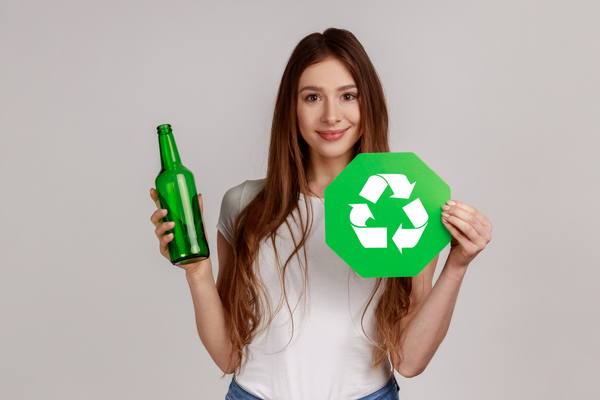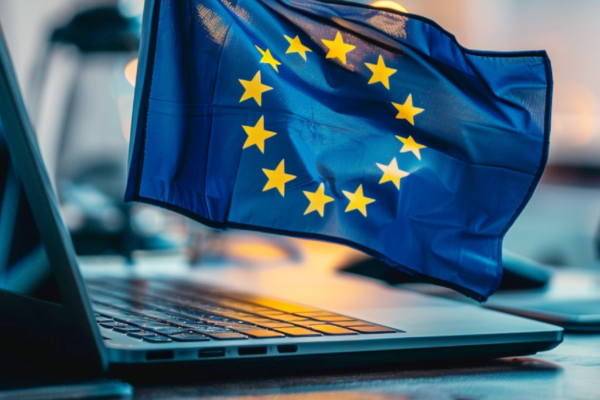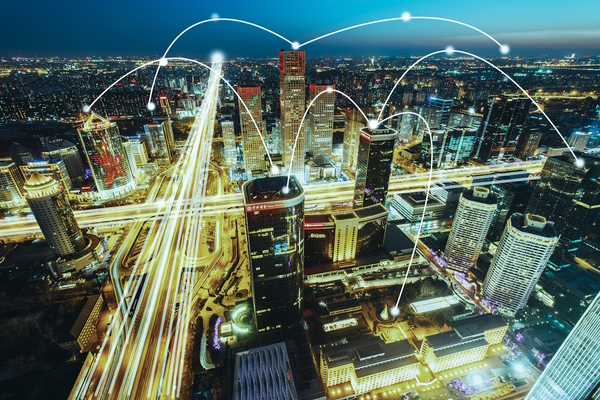Sustainability or competitiveness: bridging the divide

Helena Nordin at Advania explores the relationship between technological advancement and environmental impact
Today’s businesses face the escalating challenge of having to both maintain a competitive edge while also minimising their environmental impact. Thankfully, technology emerges as a powerful bridge, enabling them to achieve both goals simultaneously.
It’s important to understand the critical intersection between technological advancement and environmental sustainability, outlining key considerations for businesses when navigating this space.
Technology: two sides of the same coin
Technology’s role in sustainability is multifaceted. It can be a game-changer for eco-friendly practices. Smart building systems with real-time monitoring and adjustments can dramatically slash energy bills. Data-driven circular economies, where resources are tracked and efficiently reused, can significantly reduce waste. Renewable energy sources, coupled with innovative energy storage solutions, can unlock a future powered by clean sources.
However, technology is not a magical solution to all sustainability issues. The IT industry itself is a significant resource drainer. From manufacturing hardware to powering data centres, its environmental footprint is undeniable.
This underlines the importance of responsible management throughout a technology’s entire lifecycle. Sustainable practices must encompass not just using existing technology efficiently, but also consider the other aspects of the technological process including manufacturing, disposal, and the potential of reuse.
Greenwashing: the need for transparency
Misleading environmental claims, often referred to as "greenwashing," can erode consumer trust and undermine genuine sustainability efforts by others in the same industry. Businesses must be transparent about their environmental impact and avoid making exaggerated or unsubstantiated claims in order to maintain a trusting relationship with their consumers.
Initiatives such as the EU’s ‘Green Claims Directive’ aim to combat this by establishing clear standards for environmental marketing. This not only helps to foster trust, but also gives the power to the consumers to make informed choices based on publicly available knowledge – ultimately benefiting responsible companies leading the charge towards a sustainable future.
Environmental challenges and technology
Several environmental issues can be realistically addressed through targeted technological advancements.
Artificial intelligence (AI) and cloud solutions can optimise resource efficiency in sectors like transportation, food production, and construction. AI-powered logistics networks are able to streamline delivery routes, which in turn reduces fuel consumption and emissions. In agriculture, precision farming techniques utilising sensors and data analysis can optimise water usage and fertiliser application, minimising environmental impact.
However, technology is not a silver bullet to end all of the world’s environmental problems. For example, electric vehicles are touted for their clean emissions during operation, but their manufacturing and battery disposal raise environmental concerns. With the push towards a future without petrol consuming vehicles, a holistic evaluation, considering the entire life cycle of a technology, is crucial for responsible implementation.
Businesses must invest in research and development to address these hidden costs and ensure a truly sustainable solution.
A call for systemic change
Technological solutions alone won’t solve the climate crisis. As our population grows, simply "streamlining" technology won’t suffice. Deeper societal changes are necessary to achieve true sustainability, starting with the consumer. Shifting consumer preferences towards sustainable products and services will be the determining factor that drives innovation in this direction.
International cooperation is also paramount in addressing global environmental challenges. Technology can facilitate collaboration and knowledge sharing, enabling scientists, policymakers, and businesses to work together. However, its effectiveness hinges on human motivation and willingness to work towards a shared goal.
The path forward
The good news is that the trend is moving in a positive direction. Shifts in government initiatives, like the EU’s ‘Corporate Sustainability Reporting Directive’ (CSRD), promote transparency and data accessibility – setting the foundation to create new norms associated with sustainability.
The tech sector itself can play a significant role in promoting sustainable development cycles. Extending the lifespan of hardware through repair programs, software upgrades, and encouraging the use of pre-owned equipment can significantly reduce environmental impact through waste management.
Raising awareness about these options and fostering a culture of responsible consumption are crucial steps that consumers appear to be ready for.
Businesses and consumers should know that technology is not inherently destructive or even neutral; it’s a powerful tool with the potential to be immensely beneficial for sustainability.
By acknowledging its limitations and fostering responsible practices throughout its life cycle, businesses can leverage technology to bridge the gap between competitiveness and environmental responsibility, paving the way for a greener future.
Helena Nordin is Head of Corporate Responsibility and Chief Sustainability Officer at Advania
Main image courtesy of iStockPhoto.com and Peach_iStock

Business Reporter Team
Most Viewed
23-29 Hendon Lane, London, N3 1RT
23-29 Hendon Lane, London, N3 1RT
020 8349 4363
© 2024, Lyonsdown Limited. Business Reporter® is a registered trademark of Lyonsdown Ltd. VAT registration number: 830519543





